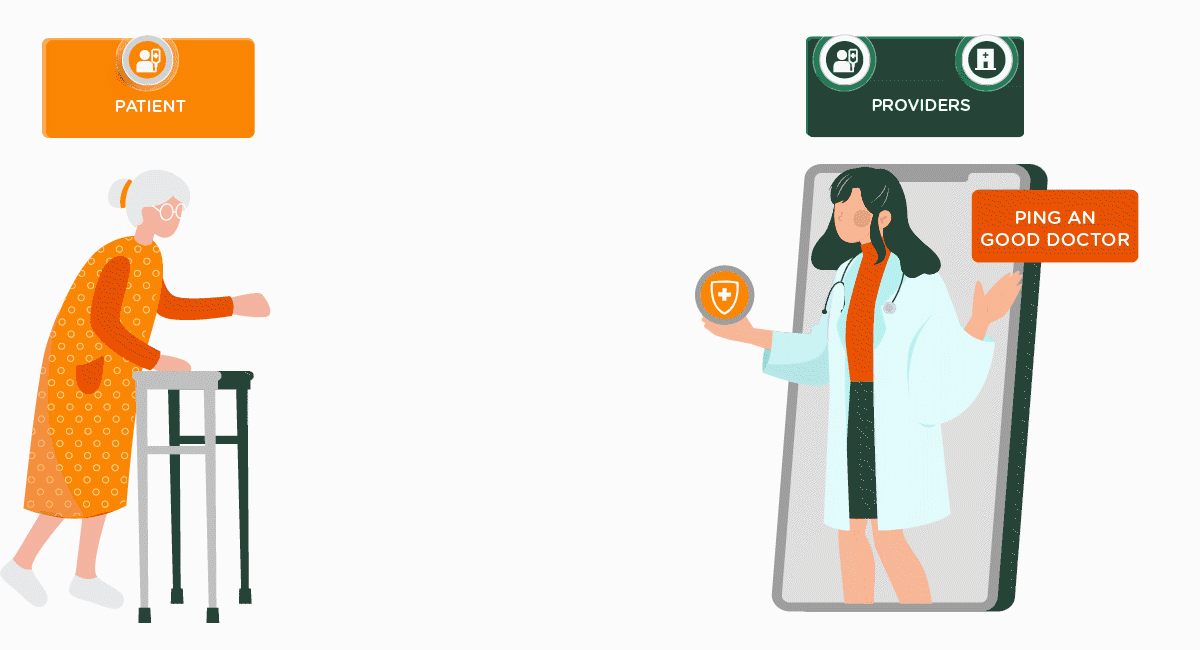Insights, Events and Videos
As China demands better health, online medicine opens opportunities to integrate all stakeholders in the healthcare pyramid — and to put patients at the top
A typical lament heard among China’s 1.4bn people, from Harbin in the north to Haikou in the south, captures the patient predicament in Chinese healthcare: “I waited three hours for a five-minute consultation.”
In any healthcare system, people should be the top priority. Yet in China — due to a dearth of primary care, overburdened hospitals, soaring health costs and overworked, underqualified doctors — patients often find themselves at the bottom of the pyramid. Healthy China 2030 — a state-led programme to build a healthy society within a decade — aims to restore the patient to the top.
With 400m chronic disease patients in the country and a fast aging society (with more than 250m seniors requiring quality care), powerful solutions will be needed to improve the patient experience. In a joint report entitled Healthy China, the World Bank and the World Health Organization call for “a new model of people-centered quality integrated health care that strengthens primary care as the core of the health system”.
Digital healthcare, including telemedicine, can link the horizontal chain of patients, providers and payers to put people first. The Ping An Group is committed to achieving this through coordinated deployment of solutions across its healthcare ecosystem.
Covid-19 has accelerated already powerful trends in telemedicine, and momentum continues to grow in what The Economist calls “the next trillion dollar industry”. With healthcare under pressure worldwide, digital solutions can ease the burden by enabling real-time partnership between interdependent players: the hospitals and doctors who heal, the authorities who administer, the payers who support an increasingly costly system, and the patients themselves.
“Telemedicine will support a safe and staged recovery [from Covid],” say Bain & Company partners Vikram Kapur and Alex Boulton in a report. “It also lays the foundation for a new era of triage system, care delivery, helping countries improve the quality of care, hold the line on rising costs and do a better job of satisfying patient expectations.”
Pioneering China’s digital healthcare transformation
When the coronavirus engulfed Wuhan in January 2020, Ping An Good Doctor — the Ping An Group’s telemedicine platform — mobilised rapidly to demonstrate its real-time capabilities. Within 24 hours, the platform launched an online anti-epidemic consultation service and an online Covid prevention mechanism.
Across China, meanwhile, the Ping An Good Doctor in-house medical team gave up their Lunar New Year holiday to work round-the-clock on the frontline of epidemic consultation. The power of telemedicine to bring together key players in the healthcare ecosystem — from local authorities in Wuhan to medical practitioners across China — was clear.

Online medicine’s potential stems from providing its own solutions while also boosting offline solutions that still represent more than 90 per cent of China’s medical services.
“For us to deliver good healthcare service to our consumers, it’s not enough to provide online diagnostic service,” says Jessica Tan, Co-CEO of Ping An Group. “We need to work hand-in-hand with the offline network, because this is where the bulk of the health consultation and services are being delivered.”
Ping An pioneered Chinese digital healthcare by launching Ping An Good Doctor in 2014. Healthcare experience and AI acumen across the Ping An Group explain why Ping An Good Doctor is now China’s leading telemedicine platform, with 373m registered users. One of its key strengths, however, is its offline healthcare network, which has more than 2,200 in-house medical staff and roughly 21,000 contractual experts.
Ping An Good Doctor collaborates with more than 3,700 hospitals (including nearly 2,000 tertiary hospitals) to ensure quality and accuracy of medical services.
The vision of providing intelligent healthcare through an integrated ecosystem drives a deeper commitment to the Healthy China 2030 mission. The goal is to meet China’s imperatives of quality care for all, reduced wait times, elimination of unneeded prescriptions (now at 60 per cent) and cost savings through digital efficiencies.
“Our vision is to build a bridge between patients and doctors,” says Weihao Fang, CEO, Ping An Good Doctor, at a recent investor day on healthcare.
Putting patients first with non-stop digital innovation
Ping An sees online medicine as an opportunity to offer outstanding healthcare across the board.
Ping An Good Doctor deploys AI doctors for initial patient consultation before connecting users with human practitioners, and its coordinated action in Wuhan galvanised China’s attention around the ability of digital ecosystems to achieve prompt health outcomes. In the pandemic’s first month, the number of new users on Ping An Good Doctor rose by a factor of 10 as the public sought effective safeguards.
Belief in digital healthcare’s ability to provide quality service and integrate the health ecosystem led Ping An Good Doctor to embark upon an ambitious upgrade of its patient-centric model. Since mid-2020, Ping An Good Doctor has launched comprehensive strategic upgrades on three fronts — channels, services and capabilities.
Upgraded Ping An Good Doctor assigns a dedicated doctor to individuals and families for a year-round relationship (rather than one-off treatment), enabling personalised strategies for overall health and wellness. A strong focus is AI-enabled preventive medicine.
And Ping An Good Doctor drives synergies across the healthcare ecosystem. For example, it provides insurance coverage for both users and doctors of up to Rmb1m, contributing to the easing of payment pressures. This is just one example of how Ping An Good Doctor, according to a recent FT Lex column, “is transforming expectations for patients and investors”.
Ping An Good Doctor is connected to other drivers in the Ping An healthcare vertical, such as Ping An Smart Healthcare (a digital integration platform for providers) and Ping An HealthKonnect (a risk management solution for health insurers).
The three platforms work together to shape the medical services that people need and optimise payment structures. As the bridge between patients and doctors, Ping An Good Doctor is the entry point in a horizontal chain that goes on to connect healthcare provision and spending in an integrated ecosystem.
“We want to be a long-term healthcare player, and to do that we have to look at the whole ecosystem, not just one solution,” Tan said in an interview with McKinsey.

